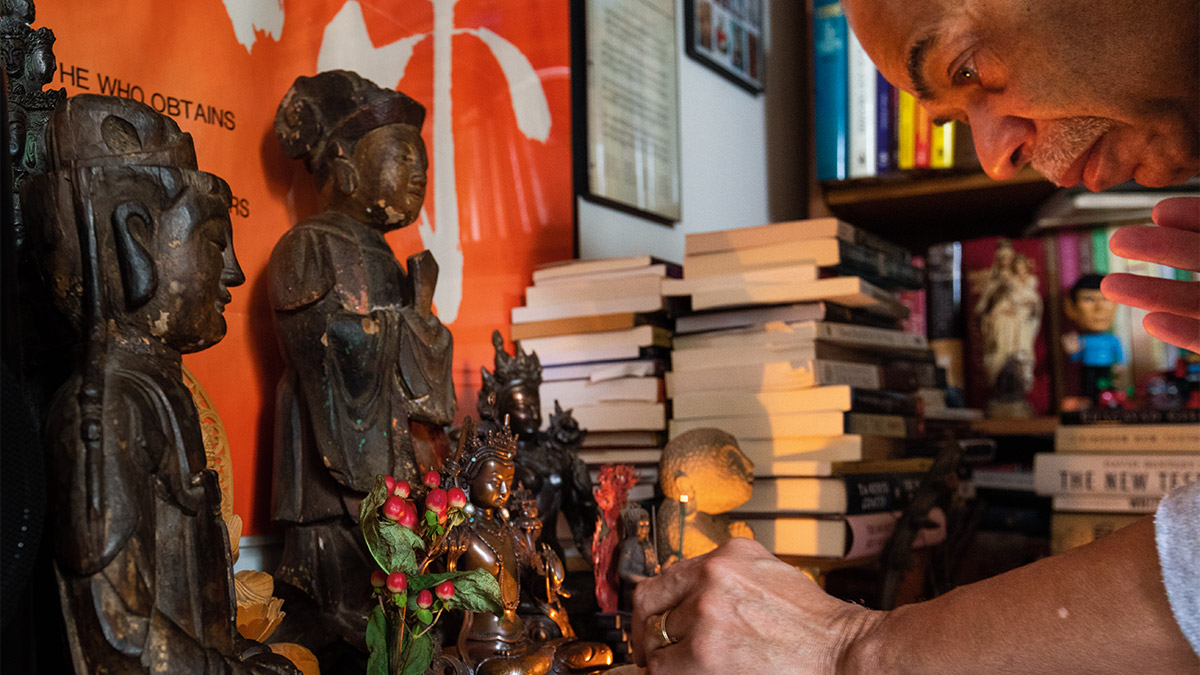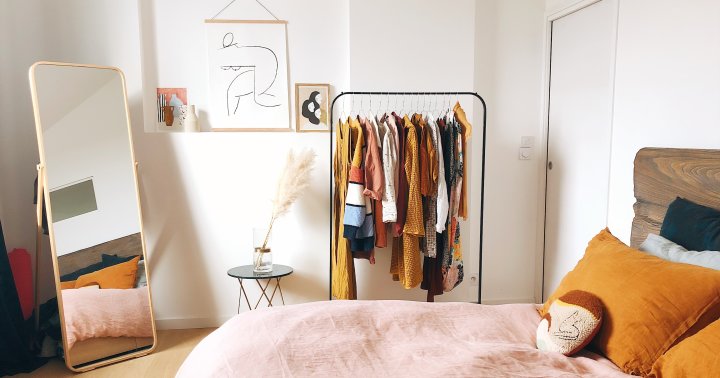How to Create a Meditation Space
No matter your living situation, you can have a place to practice. Yaotunde Obiora explains. The post How to Create a Meditation Space appeared first on Lion’s Roar.

I’ve had many experiences that have left me wanting to create meditation spaces for myself and others. I recall, as a child, seeing my grandmother sit in a chair next to a small table with pictures of my dad, aunts, and uncle, along with a bible. In that space, she’d quietly hum or read from the scriptures, while my cousins would caution, “Don’t bother Grandma, ’cause she’s sitting.” My dear grandmother would later emerge with what seemed to be revived faith.
“You can create your own peaceful refuge, no matter where you live.”
Growing up as a military dependent, I traveled to many places throughout the world where contemplation, prayer, and meditation had standing. I paid attention to those public places where people gathered for contemplation. I’ll never forget spending a day with my dad at the Pentagon in the early 1970s and coming across a meditation room. I was surprised and delighted that the country’s most important military facility had a room dedicated to meditation.
Then, in 2014, following a monthlong pilgrimage in India, I was returning to the U.S. when I had a six-hour layover in Amsterdam. As I walked around the terminal, I came across something familiar: pairs of shoes placed outside a door. Behind the door was a meditation room with cushions, chairs, and meditation shawls. It was truly an oasis, especially just coming out of a Buddhist pilgrimage.
There are so many wonderful meditation spaces in the world, but—for me—the most profound meditation space is in my apartment. This is home base for my meditation practices.
I’ve lived in my rent-stabilized, four-room apartment (one bedroom), on the fourth floor, at the tip of Manhattan, for over thirty years. This space has supported my meditation practice as it has developed over time. Years ago, when I first moved into my apartment, a blessing and clearing was done by an African healer/shaman. Herbal sachets and smudges were burned in all corners of the rooms. I sat and meditated on loving-kindness and welcomed ancestral spirits past and present. Many Buddhist monastics have visited and offered blessings and dharma teachings in my apartment. I’m fortunate to have the space I have. It provides room for three altars—dedicated to the Buddha, ancestors, and protectors respectively. There’s also space for a small table, bench, and chair, allowing me to practice Zen calligraphy with an emphasis on African pictograms and Adinkra alphabets, write haikus, practice kado (the art of arranging flowers and branches), and play the mbira.
Creating a meditation space in my apartment has been a wonderful way for me to find tranquility amidst the hustle and bustle of New York City. You, too, can create your own peaceful refuge, no matter where you live. Of course, you can dedicate a whole room to meditation—if you have the space—but it isn’t necessary. A small corner, lovingly set aside for meditation, can be just as nourishing.
The most important aspect of a meditation space is that it feels peaceful and conducive to your practice. Here are some general suggestions for setting up such a space:
Sit and bring the motivation of bodhicitta (awakened heart and mind) to the fore. Then select a quiet area in your home, as out of the way as possible.Provide the space with comfortable seating. Use a comfortable cushion(s) or chair for meditation. Consider foldable or stackable options if space is limited.
Incorporate nature into the space, for example, flowers, plants, water, and natural light. This will foster a serene atmosphere.
Personalize the space with essential oils, calming artwork, incense, and candles. Add cherished personal items that promote relaxation.
Are there mindfulness tools that would be helpful? Get a zafu and zabuton, yoga mat, or a small altar if it aligns with your practice.
Can you hear city sounds from your meditation space? If so, minimize outside noise with soundproofing materials or use soothing sounds of nature recordings.
Don’t let “stuff” take over your meditation space. Keep the area free from clutter to create a calming, spacious atmosphere.
Keep your space clean. If your meditation space is in a corner of a room, such as your living room, bedroom, or kitchen, it’s helpful to keep the whole room clean and tidy. This will make your meditation space easier to access.
People dealing with homelessness and confinement can also benefit from developing and holding a meditation space. I’m a social worker and have been a therapist for a long time. I work with people who have suffered deep, painful emotional and physical trauma in their lives. Some have come to therapy in conditions of homelessness. Trying to navigate out of a homeless situation and processing trauma at the same time requires equanimity. Creating a meditation space while homeless is challenging. Here are a few suggestions:
Some community centers, shelters, and libraries have designated quiet areas where you can meditate. And no matter what your beliefs are, churches, temples, and synagogues are often good places to access quiet.Seek out quiet spots in public parks where you can sit and meditate. If possible, bring a small portable cushion or mat with you.
If you have access to a smartphone, tap into meditation apps or guided meditation videos to help create a peaceful mental space, even if your physical surroundings are challenging.
Remember that mindfulness and meditation can be practiced anywhere. You can focus on the breath even in noisy or crowded places. The external environment can impact your meditation, but the essence of meditation lies in finding peace within yourself regardless of your surroundings.
The challenge of creating a meditation space while incarcerated requires patience, grounding, and awareness. At best, you might have an eight-by-ten-foot room that may be shared with another incarcerated person. Creating a meditation space in a prison cell can provide some solace and a sense of calm in an undoubtedly challenging environment.
Having worked with many incarcerated people, I offer these suggestions for setting up a meditation space in a prison cell:
The concept of personal space is nearly nonexistent in the carceral environment. But try to explore ways that a specific corner or area of the cell can be dedicated to meditation.If possible, use a pillow, folded blanket, or sit on the bed to provide cushioning from hard surfaces.
Practice mindfulness exercises, even if that means simply sitting quietly and focusing on the breath and body.
In your space, place a small object or image to serve as a focal point for meditation.
Try to find ways to observe noble silence. Coordinate quiet time with the prison schedule to find opportunities, such as during designated recreation periods or before lights out, for contemplation and meditation. Utilize the prison chapel.
Consider using visualization. If possible, create a mental image of a peaceful place during meditation to transport the mind away from the prison cell environment.
Ensure that any items or arrangements adhere to the rules and regulations of the prison.
Remember, despite the limitations, finding a few moments of peace and centeredness through a meditation practice can be beneficial, even in a confined space.


 KickT
KickT 























.jpg&h=630&w=1200&q=100&v=154b70b92d&c=1)








